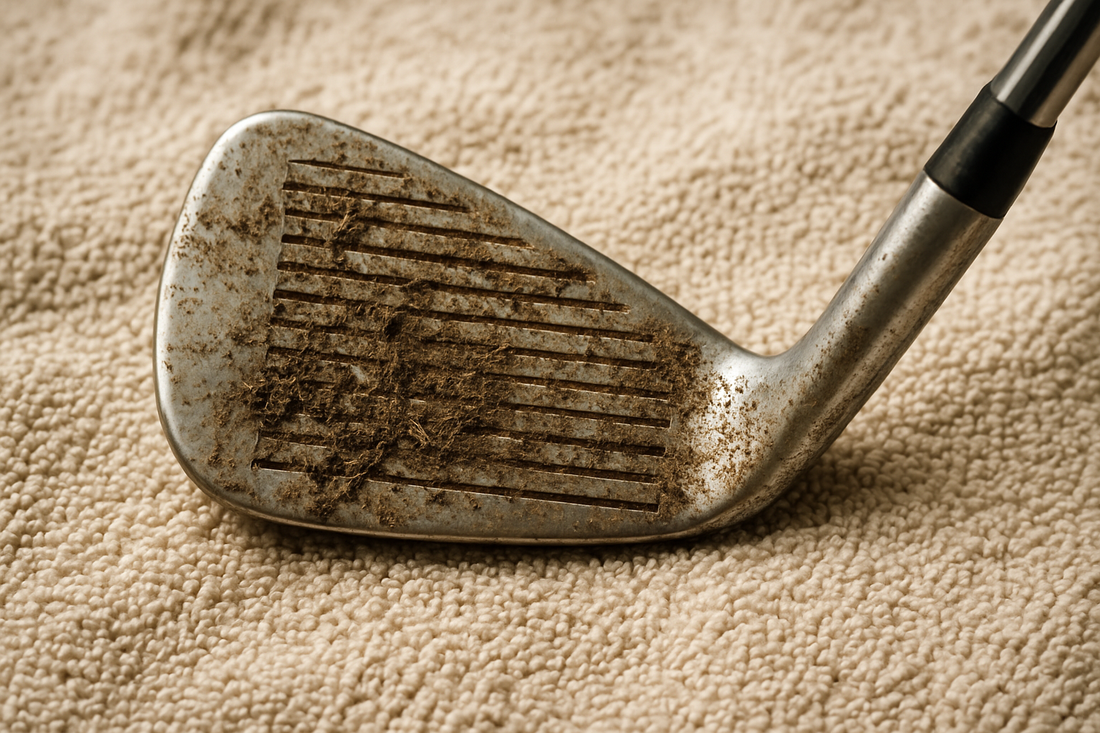
From Rags to Game-Changers: The History of the Golf Towel
Ask any golfer what the most important piece of gear is and they’re likely to rattle off driver, putter, this kind of ball but not that one. Few will mention the one item that’s been there since the beginning, catching dirt, sweat, and maybe even a few tears along the way: the golf towel.

Today’s towels may come in fancy fabrics and sleek designs, but the evolution of the golf towel took a little longer than you’d think.
The early days of golf looked a lot different than the leisurely game of today. Back then, players didn’t have the luxuries we’ve grown accustomed to.
Golf was rugged.
Played on windy links.
In wool.
With handmade wooden clubs.
They also had a small cloth that was already part of a gentleman’s wardrobe. Stretching it beyond the sneezes, social status and etiquette, the handkerchief was wiping sweat from the brow, cleaning a club face or clearing dew from a ball.
Even without recognition, it was doing the job.
As golf spread in popularity and equipment became more standardized, towels began to show up in more intentional ways. Players would loop any kind of rag they had through their belt or tied it to their bag. If it soaked up water or knocked off mud, it worked.

No regulation meant a lot of improvisation, not a lot of thought was put into it. Golf towels were one of those things you don’t need it until you need it, like a ball marker or sunscreen in July.
By the 20th century, golf had a growing arsenal of accessories that started to take on personality. Pro shops and country clubs caught on that they could embroider logos and sell them as souvenirs. Tour players' individualism began to shine through equipment, towels emblazoned with sponsors, colors and patterns became more prevalent. Towels went from being purely a practical afterthought to being a statement.
But let’s be honest: for a chunk of time, most of these towels were a thin, single-layer terry cloth that looked good as long as you didn’t use it.
If you did, it would last for about two rounds, then live out its days stiffening in the trunk of your car.
Fast-forward to today, and the humble golf towel has grown since it was a dual-use hanky. Companies now design towels with actual golfers, their gear and brand, in mind. We’re talking textured designs, smarter attachment styles, and materials that hold up through rain, sweat, and whatever just happened with that bunker shot.
No Dirt Golf, for instance, makes a towel that actually considers how golfers use their towels. Microfiber to grab and keep the water. Durable waffle knit to gently contort to your club. But the best part is you no longer need a separate brush. Whether you need to scrub, clean or dry. No gimmicks. No grommets. No clips. Just a towel that works as hard as your 7-iron on a bad day and looks good doing it.
It’s easy to overlook the towel. It may not shave strokes off your game overnight. But these are the facts:
Clean grooves create spin.
Dry hands grip better.
Clear balls roll true.

From handkerchiefs to modern, high-performance fibers, the golf towel has come a long way. It's evolved alongside the game itself: sometimes classy, sometimes crusty, always there.
So next time you’re out on the course, take a moment to appreciate the little rectangle of fabric keeping things clean behind the scenes.
And if yours smells like pond water and regret… it might be time for an upgrade.